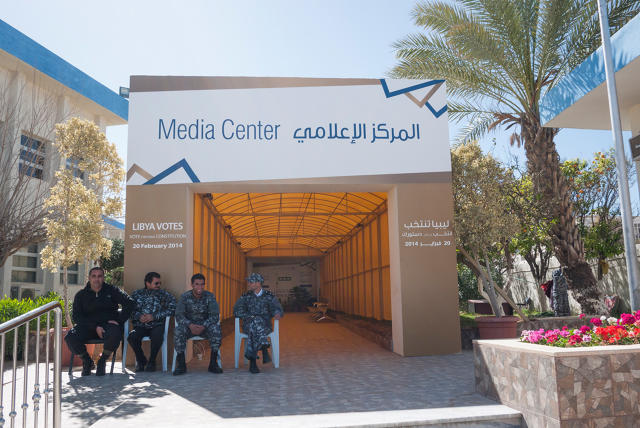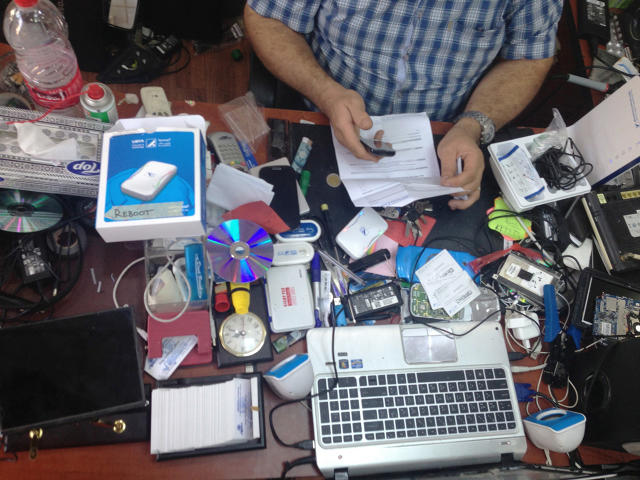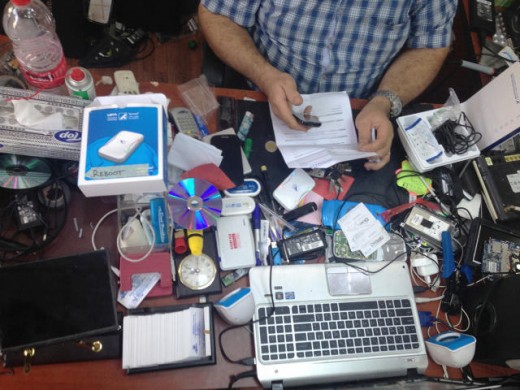Why “Design For building” Is Failing On Its Promise
We’re facing ocean-sized problems armed with teaspoons.
may 14, 2015
a couple of years in the past, I had a moment of quandary about the position of design in tackling the challenges of our time.
My agency had been requested to tackle a undertaking helping the democratic transition in Libya. After forty two years of autocratic rule, voters may at last vote, and our activity was once to help the transitional government improve a machine to register and take care of voters. Libya is a geographically huge united states of america, with a diversity of ethnicities and tribes, as well as an estimated 800,000 citizens dwelling in a foreign country, and the mission was positive to pose compelling design and development challenges. whereas development companies working in all these environments were criticized for “parachuting in” to drop off a common, pre-designed expertise product, that wasn’t an possibility for us. first of all, no person had ever created a cell voter registration machine sooner than. 2d, we wished to indicate what a really human-situated, contextually-grounded means may accomplish.
nonetheless, the decision to accept the work saved me up at night time. I was once involved that we might turn out doing more hurt than excellent by taking the venture.

Can designers alternate the sector?
I was skilled within the personal sector, however for virtually a decade now I’ve been a part of a rising group in global development seeking to use design to tackle the sector’s most tough problems. as an example, in accordance with the passion expressed by global companies and donors, together with Melinda Gates, nearly every main commercial design consultancy has launched a “social innovation” arm, together with Ideo, Frog, and (the newest) Dalberg. This neighborhood is taking the instruments that corporations have used for many years to create services that people need and applying these to the public space to create the products and services, like medical care or access to education, that folks desperately need.
but I’ve observed in this group a growing anxiousness about how a lot design can create certain exchange. At conferences, on-line, and in non-public conversations, my colleagues are wrestling with the ways that “design for development” is falling short of its promises.
this isn’t shocking, given how basically totally different the dynamics of the advance house are in comparison with these of the business world. For one thing, in functioning markets, the user (aka, the client) is powerful because she has cash to spend. The users of a construction program are frequently marginalized and powerless, with no money or voice to compel governments to listen to them.
And where business initiatives have a clear concept of the user and clear measures of success (e.g., widgets offered, dialog fee, or plain old revenue—an ideal organizing idea), public sector design projects haven’t any set “final analysis.” How do you outline “better governance”? Is it better rule of legislation? lowered violence and crime? better public products and services? It depends upon who you ask, and there are steadily advanced politics and completely different interests at stake.
What’s extra, the sector’s most intractable problems are deeply rooted in massive techniques, while design is a self-discipline excited by the sides. traditional design specializes in creating and improving society’s outputs and interactions, equivalent to a sleeker cell phone or a more efficient means to buy coffee. When these skills are translated over to the public sphere, design nonetheless tends to focal point on outputs instead of the real systemic issues. We create apps to assist college students study for his or her SATs, however deep down we know the education machine isn’t investing enough in faculties in poor neighborhoods. We design web sites to help voters floor ideas to their governments, but we all know the heavy hand of companies in politics prevents these ideas from if truth be told getting used. These projects pursue admirable targets, but as a result of they’re serious about the perimeters, they’re only making incremental improvements in a time after we need fundamental change.
We’re going through ocean-sized problems armed with teaspoons.
I’ve struggled with these questions for far of my profession. In our work at Reboot, we know that design practices are just one device in our toolkit. Our work has also drawn closely from other fields, complementing the strengths of design with these of ethnography, economics, political science, and the development box. Our designers are humble and acknowledge how a lot now we have to learn from these disciplines, which have wrestled with the sector’s thorniest issues for decades.

When support does more hurt than excellent
however there’s another deeper concern, one who led to many a sleepless night time around the elections undertaking in Libya: With our excellent intentions, our human-situated ethos, and our acceptable tech solutions, would we create a veneer of excellent will that distracts attention from, and perhaps even perpetuates, the global methods of injustice?
as a result of let’s face it: Even when well-spent, assist cash could be a method of sweeping actual solutions beneath the rug. It’s relatively cheap and easy for rich international locations to disburse help, in comparison with the hassle and cost of arriving on the tough political bargains on migration, local weather trade, change, and other considerations that will alternate lives in more meaningful ways.
Worse: In conflict scenarios, assist can also be a part of the cycle of violence. When Libya collapsed, there were 20 million arms in non-state arms—in a rustic of simply 6.2 million people. these palms had been bought to Gaddafi’s forces by Western nations, together with the united kingdom and Italy. We have been complicit within the u . s .’s destruction, a complicity that tends to be overpassed at United nations convenings and knowledgeable panels on countering weapons proliferation.

Design for systemic exchange
despite these issues, I consider that international building is still one necessary path to progress. I imagine now we have a accountability to take action however we are able to to alleviate injustice and poverty all over the world. and i believe that designers have much to offer within the greater collective effort to push ahead social and financial progress.
Reboot took the venture in Libya. We spent seven months there, thru periods of battle, to keep us aware of Libya’s dynamic political situation as we labored to fulfill tight cut-off dates. Objectively, the undertaking was once a hit: We created the world’s first mobile-primarily based voter registration system, which millions of Libyans used to register at residence and from out of the country. Our device also helped the Libyan govt increase the sophistication with which it managed its elections throughout the u . s .. It continues to be used in Libya lately.
but in this work, we also had to acknowledge that making a voter registration system was just us tinkering at the edges of the massive, advanced, decades-long technique of growing a sound democracy. We needed to be conscious of our role in this better machine, so that even when we disagreed with our Libyan counterparts, we had been there to advocate, no longer impose. This, in any case, was about change on their phrases and timelines, not ours.
As designers, it’s simple to “be aware of the best answer.” (all of the person analysis we did! the entire methods maps! all the A/B trying out!) however democracy requires people using for themselves. And once we were ready to put aside our “evidence-based design selections” and our need to “drive positive change” as we outlined these phrases, we seen a shift in what our work used to be serving.”
more necessary than our “answer” to the design downside at hand have been the conversations enabled by using the co-design process we’d undertaken with our Libyan counterparts. As we explored technical questions concerning the voter administration system—what data safety protocol to make use of, the place information must flow, what analytics to track—we have been developing the space for speak about larger questions of governance. These were questions about a govt’s obligations to its voters and the extent to which a state must make investments to satisfy these duties; we have been, in short, discussing what it method to realize a renegotiated social contract among Libya’s inhabitants and governing institutions.
many of the new govt officials had participated within the overthrow of Gaddafi; as we labored together on our small contribution to post-revolution Libya—helping voters participate in elections—we were facilitating a conversation about what it means now not simply to riot towards a dictator, however to control in a just, inclusive means.

one million little nudges
Designers have great energy: we are able to “nudge” individuals to behave in a different way. at the same time, if more of us are working towards positive exchange, the impression of 1,000,000 little nudges in the suitable direction has vast doable. The flip aspect of this is that those actions we don’t take have an impact, too. If we’re passive, and fail to actively have interaction in our work with the higher methods and objectives in mind, we’ll be (at highest) complicit in the social injustices round us.
but if we’re willing to deal with the thorny problems, to get fascinated about messy policy and political debates, and to head head-to-head with firms and interests that would like we didn’t ask the harsh questions, designers can be part of better options.
each of us could best have a teaspoon. but when we’re all scooping in the suitable route, perhaps we will begin to make some waves.
(84)














